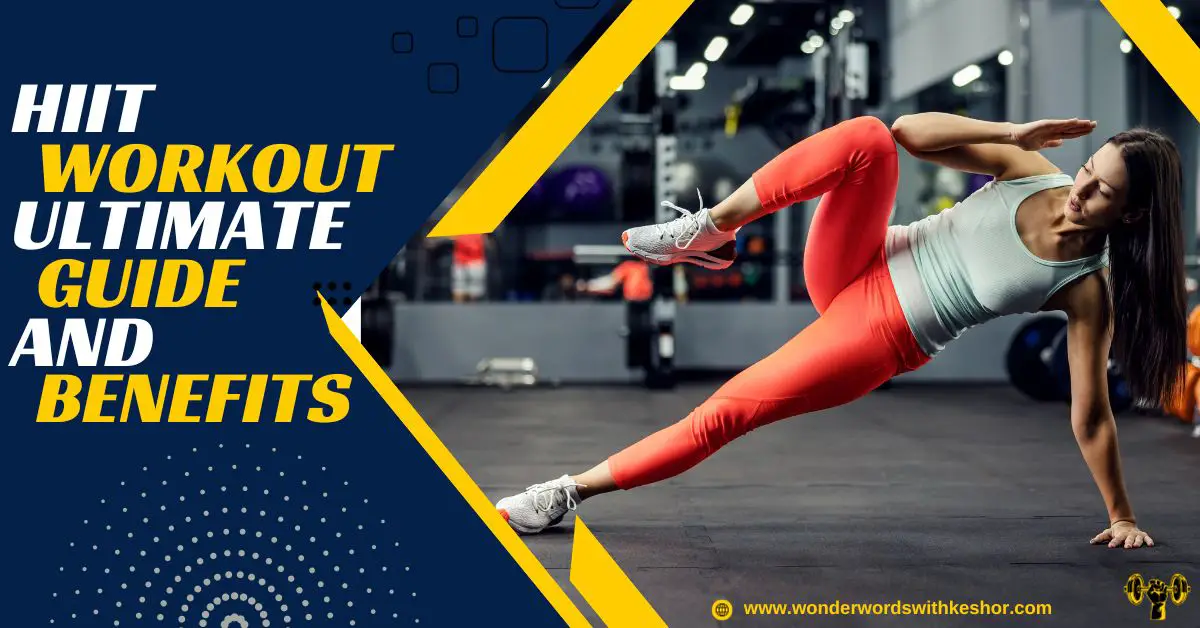High-Intensity Interval Training (HIIT) has become incredibly popular in the fitness community, transforming the way people approach their exercise regimens. In this comprehensive guide, we will delve into the intricacies of HIIT, exploring its benefits, busting myths, providing sample workouts, and examining its impact on various aspects of health. Strap in as we unravel the secrets of this dynamic and efficient fitness regimen.
Table of Contents
HIIT Workout: Ultimate Guide and 5+ Benefits of High-Intensity Interval Training
Introduction
A. Definition of HIIT Workout
HIIT Workout, short for High-Intensity Interval Training, is a workout strategy that alternates between intense bursts of activity and short periods of rest or lower-intensity exercise. This form of training is known for its ability to elevate heart rates quickly and deliver a powerful fitness punch in a short amount of time.
B. Brief History and Origins
The roots of HIIT can be traced back to various sports training programs, where athletes utilized interval training to enhance their performance. However, it wasn’t until recent years that HIIT gained mainstream popularity as a time-efficient and effective fitness method.
C. Popularity and Adoption in Fitness Culture
From professional athletes to fitness enthusiasts, HIIT has found its way into the hearts and routines of people worldwide. Its popularity stems from its ability to deliver impressive results in a fraction of the time compared to traditional workout methods.
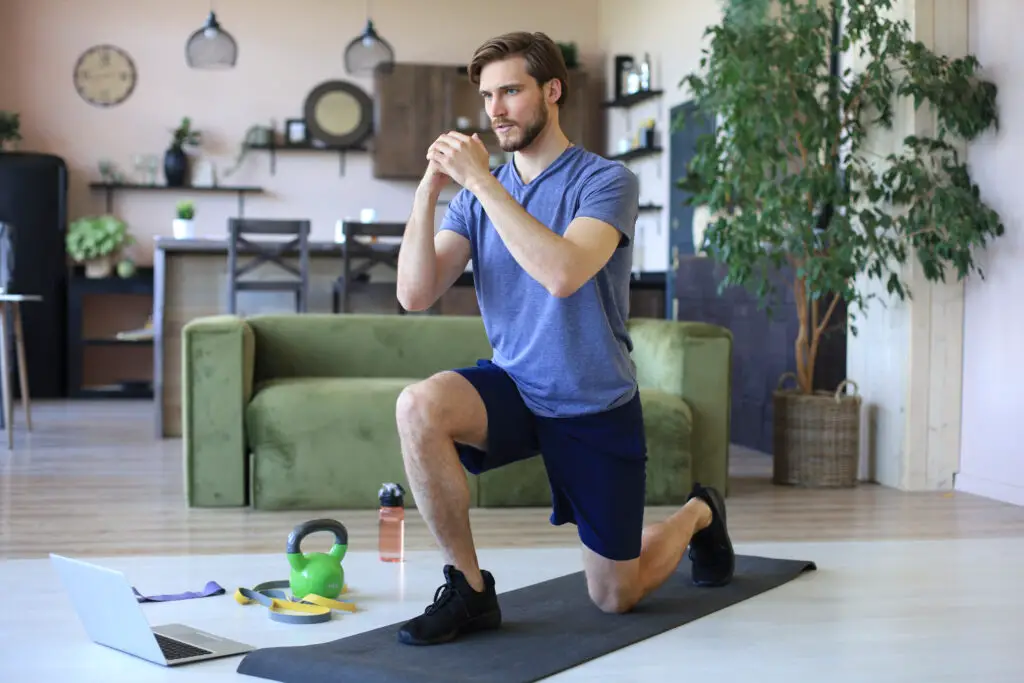
HIIT Workout: Ultimate Guide and 5+ Benefits of High-Intensity Interval Training
Benefits of HIIT Workout
A. Increased Calorie Burn
One of the primary advantages of HIIT is its exceptional calorie-burning potential. The intense intervals elevate the heart rate, leading to a sustained calorie burn even after the workout concludes, known as the afterburn effect.
B. Improved Cardiovascular Health
HIIT is like a powerhouse for your heart, boosting cardiovascular health by enhancing oxygen consumption and overall fitness. The combination of intense effort and recovery periods challenges the cardiovascular system, leading to long-term benefits.
C. Time Efficiency
In our hectic lives, time is a precious resource. HIIT’s efficiency lies in its ability to deliver maximum results in minimal time. Short, intense sessions make it accessible for individuals with busy schedules.
D. Metabolic Benefits
Beyond calorie burn, HIIT has profound effects on metabolism. It enhances insulin sensitivity and promotes fat oxidation, contributing to better metabolic health.
E. Adaptability for Various Fitness Levels
Contrary to common belief, HIIT is not exclusive to seasoned athletes. It is highly adaptable, with routines tailored for beginners, intermediate, and advanced fitness levels.
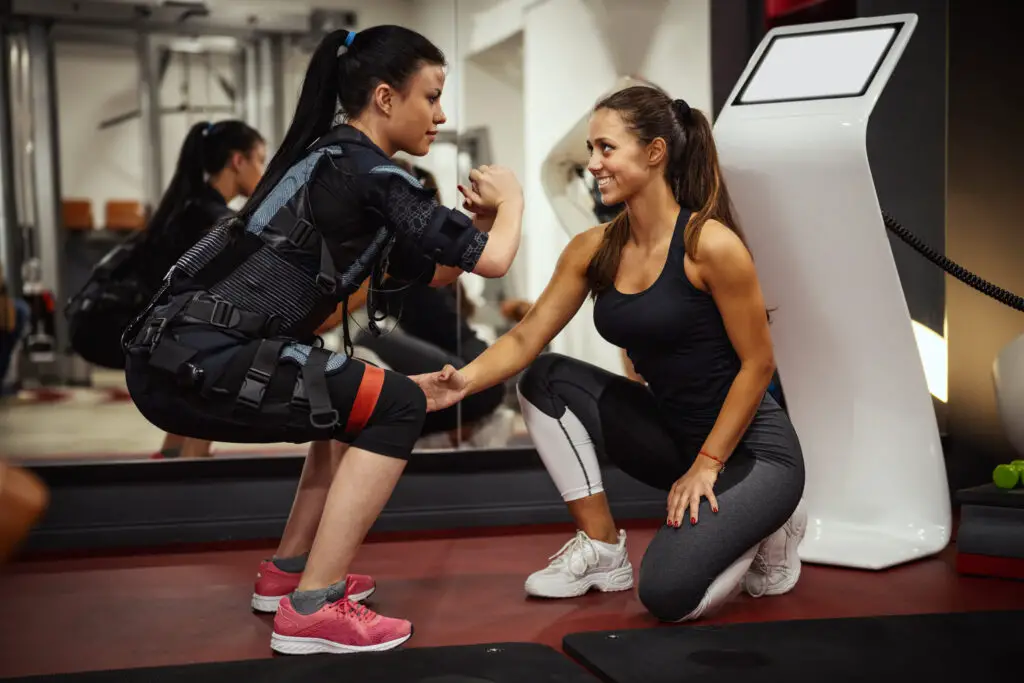
HIIT Workout: Ultimate Guide and 5+ Benefits of High-Intensity Interval Training
How HIIT Works
A. Explanation of Intervals
HIIT revolves around intervals of high-intensity exercise alternated with periods of rest or lower-intensity activity. These intervals can vary in duration, catering to different fitness goals and levels.
B. Impact on Heart Rate and Metabolism
The rapid shifts between high and low-intensity intervals challenge the heart, pushing it to work more efficiently. This, in turn, elevates the metabolism, fostering increased calorie burn.
C. EPOC (Excess Post-Exercise Oxygen Consumption)
The afterburn effect, scientifically known as Excess Post-Exercise Oxygen Consumption (EPOC), is a key element of HIIT. It refers to the continued calorie burn post-workout, as the body works to restore oxygen levels and repair tissues.
D. Scientific Principles Behind Effectiveness
HIIT’s efficacy is grounded in scientific principles. The stress placed on the body during high-intensity intervals triggers adaptations that lead to improved fitness levels, making it a scientifically sound and effective training method.
Common Misconceptions about HIIT Workout
A. Only for the Young and Fit
Contrary to the misconception that HIIT is only suitable for the young and fit, it can be adapted for individuals of all ages and fitness levels. Modifications and variations make it inclusive and achievable for everyone.
B. Requires Special Equipment
HIIT doesn’t necessitate fancy equipment. While some routines may incorporate weights or cardio machines, many HIIT workouts can be performed with body weight alone, making it accessible for home workouts.
C. Excessive Strain on the Body
While HIIT is intense, it doesn’t mean excessive strain or risk of injury. Proper form, gradual progression, and listening to one’s body are crucial elements to mitigate the risk of injury.
D. Not Suitable for Weight Loss
HIIT is a potent tool for weight loss. Its impact on calorie burn, combined with its metabolic benefits, makes it an effective strategy for individuals aiming to shed excess pounds.

HIIT Workout: Ultimate Guide and 5+ Benefits of High-Intensity Interval Training
HIIT Workout for Weight Loss
A. Role of HIIT in Fat Burning
HIIT’s ability to target fat stores makes it an ideal choice for those focusing on weight loss. The intensity of the workout prompts the body to utilize fat as a primary energy source.
B. Case Studies and Success Stories
Real-world examples of individuals achieving weight loss goals through HIIT serve as inspiration. Case studies highlight the effectiveness of incorporating HIIT into a comprehensive weight loss plan.
C. Combining HIIT with a Balanced Diet
While exercise is a crucial component of weight loss, combining HIIT with a balanced diet enhances results. Proper nutrition complements the metabolic benefits of HIIT, creating a synergistic effect.
Sample HIIT Workouts
A. Beginner’s Routine
A gentle introduction to HIIT for beginners, focusing on basic movements and longer rest intervals to accommodate initial fitness levels.
B. Intermediate Level Workouts
Intermediate HIIT workouts intensify the intervals and introduce more complex exercises, challenging individuals to progress in their fitness journey.
C. Advanced HIIT Sessions
For those seeking a challenge, advanced HIIT sessions push limits with shorter rest intervals and advanced exercises, maximizing intensity and results.
D. Specialized HIIT for Specific Fitness Goals
Tailored HIIT routines for specific fitness goals, whether it’s muscle building, endurance, or overall athletic performance.
HIIT Workout and Mental Health
A. Connection Between Physical and Mental Well-being
The relationship between physical activity and mental health is well-established. HIIT’s impact extends beyond the physical, positively influencing mood and mental well-being.
B. Release of Endorphins During HIIT
The intense nature of HIIT triggers the release of endorphins, the body’s natural mood enhancers. This contributes to the “feel-good” aspect associated with HIIT.
C. HIIT as a Stress-Reliever
The rhythmic nature of HIIT, combined with its challenging intervals, provides a healthy outlet for stress relief. Engaging in HIIT can help individuals manage and reduce stress levels.

HIIT Workout: Ultimate Guide and 5+ Benefits of High-Intensity Interval Training
HIIT Workout for Different Age Groups
A. Adaptations for Children
HIIT can be adapted for children, promoting physical activity in a fun and engaging manner. Age-appropriate routines cater to the unique needs of younger individuals.
B. Considerations for Seniors
While precautions are essential, seniors can benefit from HIIT with tailored routines focusing on mobility, balance, and cardiovascular health.
C. Safety Precautions for All Age Groups
Regardless of age, safety is paramount. Incorporating proper warm-ups, cooldowns, and modifications ensures a safe and effective HIIT experience for all age groups.
HIIT Workout and Technology
A. Apps and Online Resources
The digital age has ushered in a plethora of HIIT apps and online resources, offering guided workouts, timers, and progress tracking to enhance the HIIT experience.
B. Wearable Fitness Tech for HIIT
Smartwatches and fitness trackers have integrated HIIT functionalities, allowing individuals to monitor heart rate, track progress, and optimize their workouts.
C. Integrating Technology into HIIT Routines
From virtual classes to augmented reality workouts, technology continues to play a pivotal role in shaping the future of HIIT, enhancing accessibility and engagement.
Nutrition Tips for HIIT Workout
A. Pre-Workout Meals
Optimizing performance through proper nutrition is vital. Pre-workout meals should provide a balance of carbohydrates and protein to fuel the body.
B. Hydration During HIIT
Staying hydrated is crucial during HIIT. Intense exercise increases fluid loss, and adequate hydration supports performance and recovery.
C. Post-Workout Nutrition
Post-HIIT nutrition is essential for recovery. A combination of protein and carbohydrates aids muscle repair and replenishes energy stores.

HIIT Workout: Ultimate Guide and 5+ Benefits of High-Intensity Interval Training
HIIT Workout and Long-Term Fitness Goals
A. Sustainability of HIIT
HIIT’s efficiency makes it sustainable for long-term fitness goals. Its time-friendly nature encourages consistency, a key element in achieving and maintaining fitness objectives.
B. Combining HIIT with Other Fitness Activities
HIIT can complement other forms of exercise, creating a well-rounded fitness routine. Combining strength training, flexibility exercises, and HIIT offers a holistic approach to health.
C. Preventing Burnout and Injuries
Balancing intensity with adequate rest, recovery, and variety is crucial in preventing burnout and reducing the risk of injuries associated with overtraining.
Expert Opinions on HIIT Workout
A. Fitness Trainers’ Perspectives
Insights from fitness trainers on the efficacy of HIIT, tips for successful implementation, and considerations for clients with varying fitness levels.
B. Insights from Sports Scientists
The scientific community weighs in on the physiological and psychological benefits of HIIT, highlighting research findings and future directions.
C. Testimonials from HIIT Enthusiasts
Real-life testimonials from individuals who have incorporated HIIT into their routines, sharing personal experiences and transformations.
HIIT Workout and Medical Conditions
A. Precautions for Individuals with Health Issues
Guidelines for individuals with medical conditions, emphasizing the importance of consulting healthcare professionals before engaging in HIIT.
B. Consultation with Healthcare Professionals
The significance of obtaining medical clearance before starting HIIT, especially for individuals with pre-existing health conditions or concerns.
C. Customizing HIIT for Specific Medical Conditions
Adapting HIIT routines for individuals with conditions such as diabetes, cardiovascular issues, or joint problems to ensure a safe and effective workout.

HIIT Workout: Ultimate Guide and 5+ Benefits of High-Intensity Interval Training
Myths vs. Facts in HIIT Workout
A. Addressing Misconceptions
Clarifying common misconceptions surrounding HIIT, providing evidence-based information to dispel myths and foster a clear understanding of its principles.
B. Debunking Popular Myths
Taking a closer look at prevalent myths surrounding HIIT, exploring the origins of misconceptions, and presenting scientific evidence to debunk them.
C. Evidence-Based Facts Supporting HIIT
Presenting irrefutable evidence supporting the efficacy and benefits of HIIT, backed by scientific studies and research findings.
HIIT’s Impact on Cardiovascular Health
Research consistently demonstrates that HIIT leads to significant improvements in cardiovascular health. Studies, such as those published in the American Journal of Cardiology, highlight the positive effects of HIIT on reducing blood pressure, improving arterial function, and enhancing overall cardiovascular fitness. The combination of intense intervals and recovery periods creates a cardiovascular stimulus that contributes to these beneficial adaptations.
Metabolic Advantages of HIIT Workout
Scientific investigations into the metabolic effects of HIIT reveal its potential to enhance insulin sensitivity and glucose regulation. The Journal of Applied Physiology and other reputable sources have published studies indicating that HIIT can play a crucial role in managing blood sugar levels. This metabolic advantage is particularly relevant for individuals at risk of or managing conditions such as type 2 diabetes.
HIIT Workout and Fat Oxidation
One of the standout features of HIIT is its impact on fat oxidation. Research, including studies in the International Journal of Obesity, consistently shows that HIIT is effective in promoting fat loss. The intense bursts of activity during HIIT sessions stimulate the body to utilize fat as a primary energy source, contributing to weight management and improved body composition.

HIIT Workout: Ultimate Guide and 5+ Benefits of High-Intensity Interval Training
EPOC and Caloric Expenditure
Excess Post-Exercise Oxygen Consumption (EPOC) is a phenomenon associated with HIIT that contributes to prolonged caloric expenditure. Studies, such as those published in the European Journal of Applied Physiology, reveal that the afterburn effect from HIIT can extend the calorie-burning process for hours after the workout. This makes HIIT a potent tool for those aiming to maximize energy expenditure and weight loss.
HIIT for Mental Well-being
Beyond the physical benefits, HIIT has been linked to positive effects on mental well-being. Research in the Journal of Sport and Exercise Psychology suggests that engaging in regular HIIT can lead to improvements in mood, reductions in anxiety, and increased cognitive function. The release of endorphins during intense intervals contributes to the overall mental health benefits associated with HIIT.
Adaptability and Accessibility of HIIT Workout
Numerous studies highlight the adaptability and accessibility of HIIT across diverse populations. Whether it’s a study in the Journal of Aging and Physical Activity emphasizing the suitability of HIIT for older adults or research in Pediatric Exercise Science exploring the benefits for children, HIIT’s versatility is evident. The adaptability of HIIT routines makes it a viable option for individuals of varying ages and fitness levels.
HIIT’s Role in Muscle Building
Contrary to the misconception that HIIT is solely for cardiovascular fitness, evidence suggests its positive impact on muscle building. The American College of Sports Medicine notes that HIIT can stimulate muscle protein synthesis and contribute to muscle hypertrophy. While traditional resistance training remains a primary method for muscle development, incorporating HIIT can provide additional benefits.
HIIT and Long-Term Health
Long-term adherence to HIIT has been associated with sustained health benefits. Research published in the Journal of Physiology indicates that the continued practice of HIIT can lead to enduring improvements in cardiovascular function and metabolic health. The sustainability of HIIT as a fitness strategy underscores its potential for individuals seeking lasting health benefits.
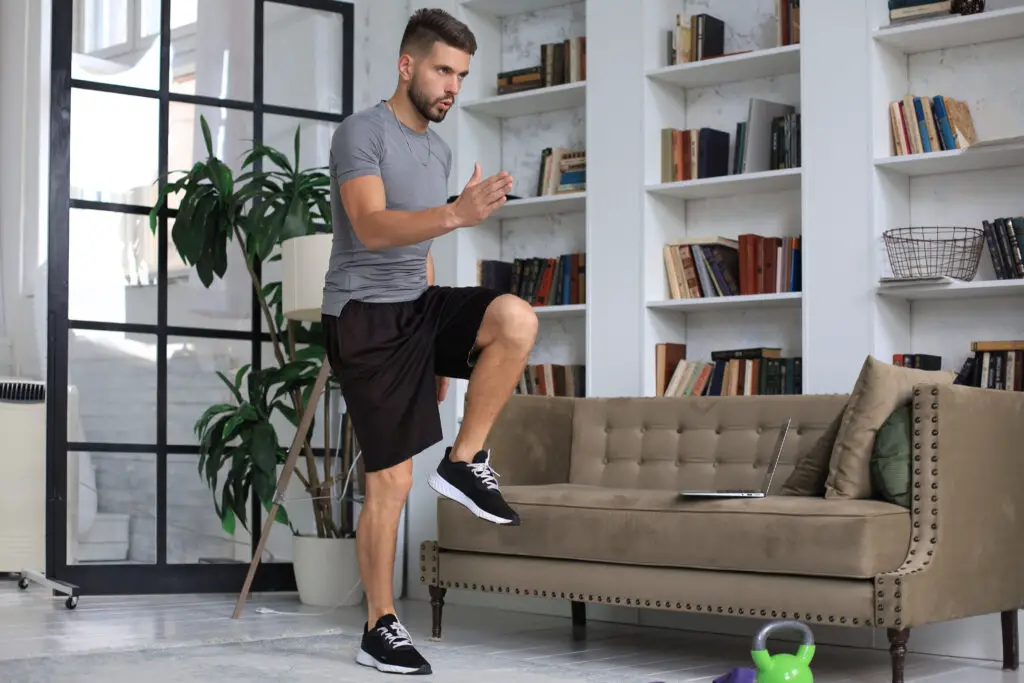
HIIT Workout: Ultimate Guide and 5+ Benefits of High-Intensity Interval Training
HIIT and Insulin Sensitivity
Insulin sensitivity is a critical aspect of metabolic health, and HIIT has demonstrated positive effects in this regard. Studies in the Journal of Diabetes Research highlight the ability of HIIT to enhance insulin sensitivity, making it a valuable component in strategies for preventing and managing metabolic conditions.
Incorporating HIIT into Daily Life
As we explore the practical aspects of integrating High-Intensity Interval Training (HIIT) into your daily routine, it’s crucial to emphasize that the effectiveness of HIIT lies in its adaptability to diverse lifestyles. Let’s delve into strategies for seamlessly infusing HIIT into your daily life, regardless of how hectic or demanding it may be.
A. Quick HIIT Routines for Busy Schedules
In the hustle and bustle of daily life, time constraints often deter individuals from engaging in regular exercise. However, HIIT offers a solution with its time-efficient nature. Quick HIIT routines, ranging from 15 to 30 minutes, can be easily incorporated into busy schedules. Whether it’s a morning burst of activity or a brief session during a lunch break, these routines ensure you reap the benefits of HIIT without sacrificing precious time.
B. Integrating HIIT into Workplace Wellness
For those spending a significant portion of their day in an office environment, incorporating HIIT into workplace wellness initiatives is a game-changer. Simple exercises like chair squats, desk push-ups, or quick cardio intervals during breaks can rejuvenate both the body and mind. Employers recognizing the importance of employee well-being can encourage the integration of HIIT into the workday, promoting a healthier and more energetic workforce.
C. Family-Friendly HIIT Activities
Families often find it challenging to synchronize their schedules for group workouts. However, family-friendly HIIT activities provide a solution. These can be as simple as a weekend park session or a quick living room workout. By involving family members, HIIT becomes a shared experience, fostering a supportive and active family environment. It’s a win-win, promoting health and family bonding simultaneously.
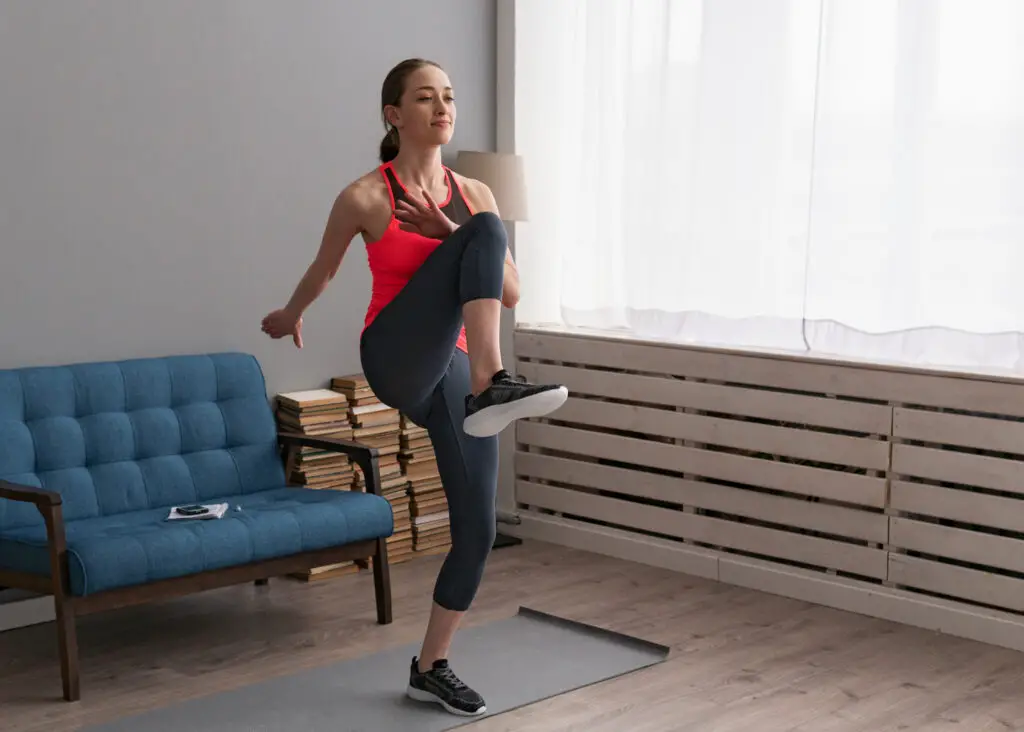
HIIT Workout: Ultimate Guide and 5+ Benefits of High-Intensity Interval Training
HIIT Workout Success Stories
In the realm of fitness, success stories serve as powerful motivators. Let’s explore real-life accounts of individuals who have embraced HIIT, unveiling their transformative journeys and the impact of high-intensity training on their lives.
A. Transformation Stories
HIIT has been a catalyst for remarkable physical transformations. Individuals share stories of significant weight loss, muscle gain, and overall body composition improvements. These stories provide inspiration for those embarking on their own fitness journey, showcasing the tangible results achievable through dedication to HIIT.
B. Real-World Examples of HIIT Impact
Beyond the aesthetics, HIIT has tangible effects on daily life. Success stories detail increased energy levels, improved focus, and enhanced overall well-being. These real-world examples highlight the holistic benefits of HIIT, demonstrating that its impact extends beyond the gym or workout space.
C. Before-and-After Testimonials
Before-and-after testimonials offer a glimpse into the journey individuals undergo with HIIT. These narratives encompass not only physical changes but also the mental and emotional shifts that accompany a commitment to high-intensity training. From increased confidence to a more positive outlook on life, these testimonials illuminate the multifaceted benefits of HIIT.
Future Trends in HIIT Workout
As we stand at the intersection of fitness innovation and technological advancement, the future of High-Intensity Interval Training (HIIT) holds exciting possibilities. Let’s explore emerging trends, cutting-edge research, and predictions that will shape the landscape of HIIT in the years to come.
A. Emerging Research in High-Intensity Training
Ongoing research continues to unveil new facets of HIIT, exploring its effects on different populations, uncovering optimal protocols, and delving into the molecular mechanisms behind its effectiveness. As scientists delve deeper, the evolving body of knowledge will refine our understanding of HIIT, paving the way for more targeted and personalized approaches.
B. Innovations in HIIT Techniques
Innovation within the fitness industry is relentless, and HIIT is no exception. From novel exercise protocols to inventive equipment, the future promises an array of innovative HIIT techniques. Whether it’s the incorporation of virtual reality or AI-driven coaching, these advancements aim to enhance the effectiveness and enjoyment of HIIT.
C. Predictions for the Future of HIIT
Experts predict that HIIT will continue to dominate the fitness landscape, becoming a staple in mainstream exercise routines. The fusion of HIIT with other popular fitness modalities, such as yoga or functional training, may give rise to hybrid workout programs, catering to diverse preferences and goals. Additionally, increased accessibility through technology and streamlined workout experiences will likely contribute to HIIT’s widespread adoption.

HIIT Workout: Ultimate Guide and 5+ Benefits of High-Intensity Interval Training
HIIT Challenges and Solutions
While High-Intensity Interval Training (HIIT) offers a plethora of benefits, it’s not without its challenges. Understanding and addressing these challenges are crucial for ensuring a sustainable and effective HIIT practice. Let’s explore common obstacles individuals may encounter in maintaining HIIT routines and the strategies to overcome them.
A. Common Obstacles in Maintaining HIIT Routines
- Time Constraints:
- Challenge: Busy schedules may hinder consistent participation in HIIT workouts.
- Solution: Opt for shorter, more intense sessions, and schedule workouts during periods of the day with fewer time constraints.
- Perceived Intensity:
- Challenge: Some individuals may find the intensity of HIIT daunting.
- Solution: Gradually increase intensity, starting with modified or beginner-friendly routines, and progressively advance as fitness levels improve.
- Monotony and Boredom:
- Challenge: Repeating the same HIIT routines can lead to boredom.
- Solution: Introduce variety by changing exercises, incorporating new movements, or exploring different forms of HIIT, such as Tabata or circuit training.
- Risk of Injury:
- Challenge: High-intensity workouts may pose a risk of injury if not performed with proper form.
- Solution: Prioritize form over speed, incorporate adequate warm-ups and cooldowns, and listen to your body to prevent overexertion.
- Lack of Motivation:
- Challenge: Sustaining motivation over time can be difficult.
- Solution: Set realistic goals, track progress, and find a workout buddy or community for support and accountability.
B. Strategies for Overcoming Challenges
- Personalized Approach:
- Tailor HIIT routines to individual fitness levels and preferences, ensuring a personalized and enjoyable experience.
- Progressive Overload:
- Gradually increase the intensity and complexity of HIIT workouts over time to promote continuous adaptation and prevent plateaus.
- Diverse Workout Modalities:
- Explore different forms of HIIT, such as bodyweight exercises, cardio intervals, or HIIT with equipment, to keep workouts engaging and challenging.
- Cross-Training:
- Supplement HIIT with other forms of exercise, such as strength training or yoga, to provide variety and address different aspects of fitness.
- Mindful Recovery:
- Prioritize recovery with adequate rest, sleep, and active recovery exercises to prevent burnout and reduce the risk of overtraining.
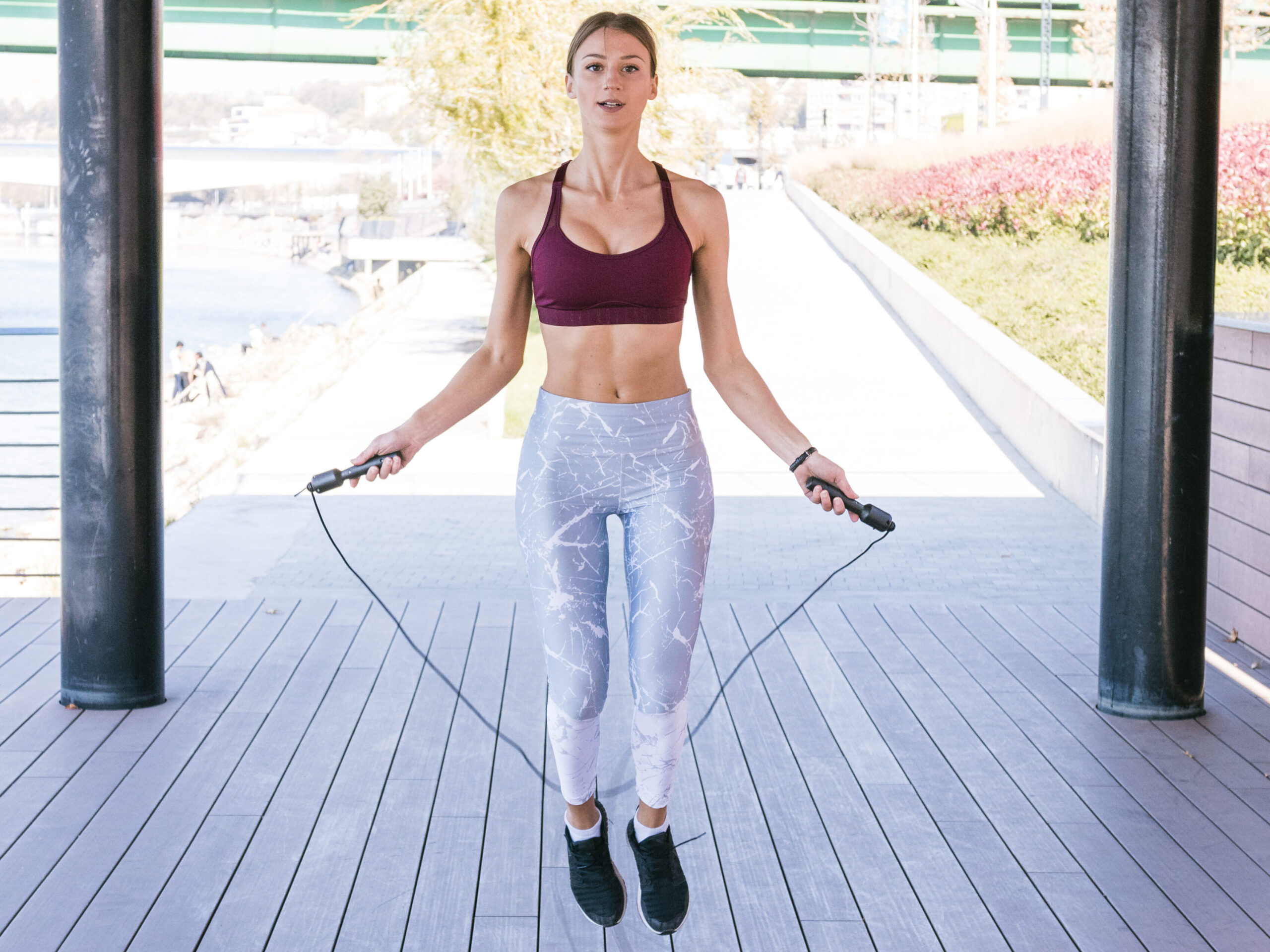
HIIT Workout: Ultimate Guide and 5+ Benefits of High-Intensity Interval Training
HIIT Workout and Body Composition
As we navigate the diverse landscape of fitness, the relationship between High-Intensity Interval Training (HIIT) and body composition takes center stage. Let’s explore how HIIT contributes to muscle building, toning, and achieving a balanced physique.
A. Muscle Building with HIIT
Contrary to the misconception that HIIT focuses solely on cardiovascular fitness, it also plays a role in muscle building. The intensity of HIIT stimulates muscle fibers, triggering adaptations that contribute to muscle growth. While traditional strength training remains a primary modality for hypertrophy, incorporating HIIT can provide a dynamic and efficient approach to building lean muscle.
B. HIIT for Toning and Sculpting
For individuals seeking to tone and sculpt their bodies, HIIT offers an effective solution. The combination of high-intensity intervals and brief recovery periods elevates the heart rate, promoting calorie burn and fat loss. This, in turn, reveals and enhances muscle definition, contributing to a toned and sculpted appearance. HIIT’s ability to address both cardiovascular fitness and muscular definition makes it a versatile tool for achieving aesthetic goals.
C. Achieving a Balanced Physique with HIIT
Balancing cardiovascular fitness, muscle building, and overall body composition is integral to achieving a well-rounded physique. HIIT’s versatility allows individuals to customize their routines to target specific areas or achieve specific aesthetic goals. Whether the focus is on enhancing cardiovascular endurance, building lean muscle, or reducing body fat, HIIT can be tailored to support a holistic approach to body composition.
Conclusion:
HIIT Workout: Ultimate Guide and 5+ Benefits of High-Intensity Interval Training
As we reach the culmination of our exploration into the dynamic realm of High-Intensity Interval Training (HIIT), it’s essential to recap the key insights and leave you with a resounding call to action for a healthier, more vibrant lifestyle.
A. Recap of Key Points
- Efficiency in Time: HIIT’s hallmark lies in its ability to deliver significant fitness benefits in a fraction of the time compared to traditional workouts. Short yet intense sessions make it accessible for individuals with busy schedules.
- Versatility and Adaptability: HIIT is not a one-size-fits-all approach. Its adaptability allows individuals of all ages and fitness levels to engage in tailored routines, fostering inclusivity within the fitness community.
- Holistic Health Impact: Beyond calorie burn and cardiovascular improvements, HIIT positively influences mental well-being, providing stress relief and triggering the release of endorphins.
- Scientifically Proven Efficacy: The scientific principles underpinning HIIT are well-established. From EPOC to metabolic enhancements, research consistently supports the efficacy of this high-intensity training method.
B. Encouragement for Readers to Try HIIT
If you’ve been on the fence about incorporating HIIT into your fitness routine, now is the time to take the plunge. The benefits, both physical and mental, are within reach, waiting to be unlocked through the power of high-intensity intervals.
C. Call to Action for a Healthier Lifestyle
Embarking on a fitness journey, particularly with HIIT, is not just about achieving short-term goals. It’s a commitment to a healthier, more energetic, and fulfilling life. The versatility of HIIT allows you to tailor your workouts to align with your objectives, whether it’s weight loss, muscle building, or overall well-being.
Incorporate HIIT into your daily routine, experiment with different routines to find what resonates with you, and celebrate the small victories along the way. Remember that consistency is key, and each session contributes to your overall progress.
As you embrace the invigorating challenges of HIIT, let it not be merely a workout but a lifestyle—a lifestyle that propels you toward long-term health, resilience, and a sense of accomplishment.
https://www.youtube.com/watch?v=ilWvAyEamOU
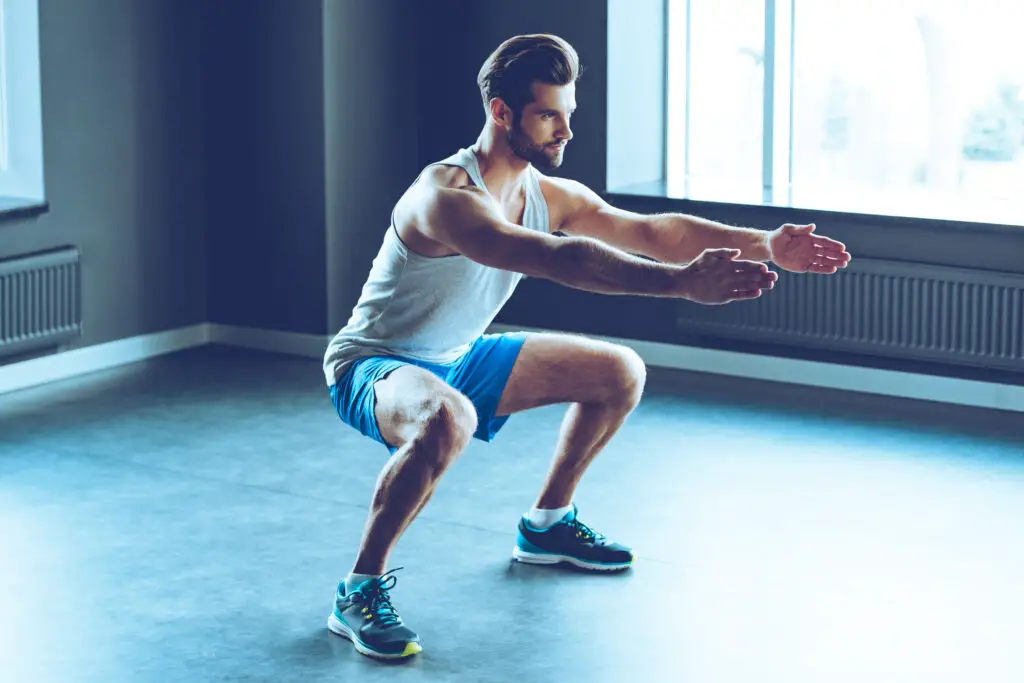
Frequently Asked Questions (FAQs):
HIIT Workout: Ultimate Guide and 5+ Benefits of High-Intensity Interval Training
- Q: Is HIIT Suitable for Beginners?
A: Absolutely! HIIT is adaptable to all fitness levels. Beginners can start with modified exercises and longer rest intervals, gradually progressing as their fitness improves. - Q: How much time is recommended for a standard High-Intensity Interval Training (HIIT) session?
A: The beauty of HIIT is its time efficiency. Sessions can range from 15 to 30 minutes, making it accessible for those with busy schedules. - Q: Does HIIT Require Special Equipment?
A: Not necessarily. While some routines may incorporate equipment, many HIIT workouts can be done using just body weight. This makes it accessible for home workouts. - Q: Can HIIT Help with Weight Loss?
A: Absolutely. HIIT’s impact on calorie burn, fat oxidation, and metabolic rate makes it an effective tool for weight loss when combined with a balanced diet. - Q: Is HIIT Only for Cardiovascular Fitness?
A: No, HIIT also contributes to muscle building. The intensity of the intervals stimulates muscle fibers, making it a versatile approach for overall fitness. - Q: How Often Should I Do HIIT Workouts?
A: The frequency of HIIT depends on individual fitness levels and goals. Beginners might start with 2-3 sessions per week, while more experienced individuals may do it 4-5 times. - Q: Can HIIT Be Adapted for Seniors?
A: Yes, with proper precautions. Tailored routines focusing on mobility and balance can make HIIT accessible and beneficial for seniors. - Q: Does HIIT Impact Mental Health?
A: Absolutely. The release of endorphins during HIIT contributes to improved mood, reduced stress, and enhanced overall mental well-being. - Q: Can I Combine HIIT with Other Forms of Exercise?
A: Certainly. HIIT can complement other activities like strength training or yoga, creating a well-rounded fitness routine. - Q: Are There Precautions for Individuals with Medical Conditions?
A: Yes, individuals with health concerns should consult healthcare professionals before starting HIIT. Adapting routines to specific medical conditions is crucial for a safe workout. - Q: How Does HIIT Contribute to Long-Term Fitness Goals?
A: HIIT’s time-friendly nature encourages consistency, making it sustainable for long-term fitness goals. Balancing intensity with rest is key to preventing burnout and injuries. - Q: Can HIIT Be Incorporated into a Busy Work Schedule?
A: Absolutely. Quick HIIT sessions, workplace wellness initiatives, or family-friendly activities make it feasible to integrate HIIT into even the busiest schedules. - Q: What’s the Future of HIIT in Fitness Trends?
A: HIIT is expected to remain a dominant fitness trend. Innovations, emerging research, and technological integration are poised to shape the future landscape of HIIT. - Q: Does HIIT Only Focus on Physical Fitness?
A: No, HIIT positively impacts mental well-being as well. The combination of physical exertion and the release of endorphins contributes to a holistic approach to health. - Q: Can HIIT Help in Achieving a Balanced Physique?
A: Certainly. HIIT can contribute to muscle building, toning, and achieving a balanced physique by addressing both cardiovascular and muscular aspects of fitness.
HIIT Workout: Ultimate Guide and 5+ Benefits of High-Intensity Interval Training
